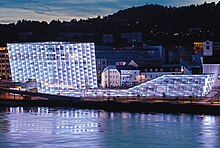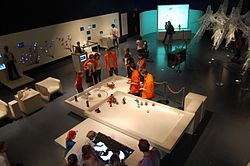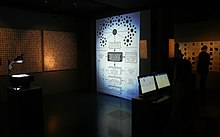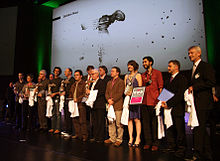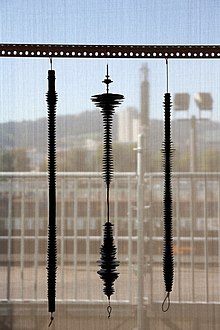
Manfred Mohr is a German artist considered to be a pioneer in the field of digital art. He has lived and worked in New York since 1981.
The Prix Ars Electronica is one of the best known and longest running yearly prizes in the field of electronic and interactive art, computer animation, digital culture and music. It has been awarded since 1987 by Ars Electronica.

Karl Sims is a computer graphics artist and researcher, who is best known for using particle systems and artificial life in computer animation.
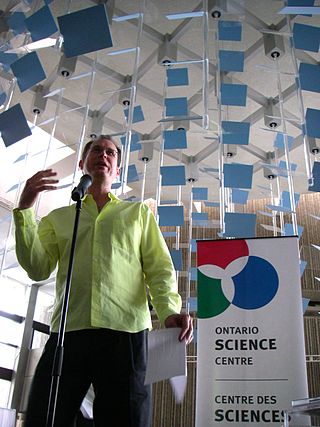
David Rokeby is a Canadian artist who has been making works of electronic, video and installation art since 1982. He lives with his wife, acclaimed pianist Eve Egoyan, in Toronto, Canada.

AaltoMedia Lab is a transdisciplinary laboratory focusing on digital art and design and its impact to culture and society. The Lab is part of the Department of Art and Media at the School of Arts, Design and Architecture, Aalto University in Finland.
Cyberarts or cyberart refers to the class of art produced with the help of computer software and hardware, often with an interactive or multimedia aspect.
Eyebeam is a not-for-profit art and technology center in New York City, founded by John Seward Johnson III with co-founders David S. Johnson and Roderic R. Richardson.

Maurice Benayoun is a French new-media artist, curator, and theorist based in Paris and Hong Kong.

Mark Stephen Meadows (born September 28, 1968), known by his artist name, pighed, is an American author, inventor and artist.
Daniel Rozin is an Israeli-American artist working in the area of interactive digital art. As an interactive artist Rozin creates installations and sculptures that have the unique ability to change and respond to the presence and point of view of the viewer. In many cases the viewer becomes the contents of the piece and in others the viewer is invited to take an active role in the creation of the piece.

Golan Levin is an American new media artist, composer, performer and engineer interested in developing artifacts and events which explore supple new modes of reactive expression.
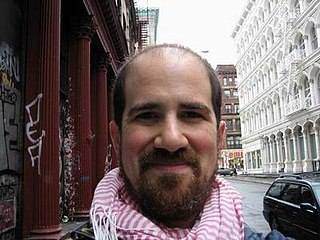
Zachary Lieberman is an American new media artist, designer, computer programmer, and educator.
Can You See Me Now? (CYSMN) is an urban chase game developed by Blast Theory and The Mixed Reality Lab in 2001. CYSMN is a pervasive game, where performers on the streets of a city use handheld computers, GPS and walkie talkies to chase online players who move their avatars through a virtual model of the same town. CYSMN was built in the Equator project on the EQUIP architecture.
Jeffrey Shaw is a visual artist known for being a leading figure in new media art. In a prolific career of widely exhibited and critically acclaimed work, he has pioneered the creative use of digital media technologies in the fields of expanded cinema, interactive art, virtual, augmented and mixed reality, immersive visualization environments, navigable cinematic systems and interactive narrative. Shaw was co-designer of Algie the inflatable pig, which was photographed above Battersea Power Station for the 1977 Pink Floyd album, Animals.
Benjamin Fry is an American designer who has expertise in data visualization.
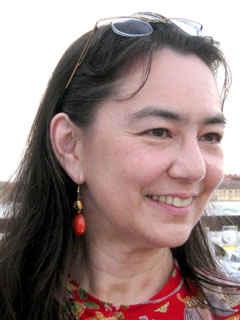
Tamiko Thiel is an American artist, known for her digital art. Her work often explores "the interplay of place, space, the body and cultural identity," and uses augmented reality (AR) as her platform. Thiel is based in Munich, Germany.
Universal Everything is a digital art practice and design studio based in Sheffield, England. The studio was founded in 2004 by Matt Pyke, who is the creative director. Pyke studied botanical and technical illustration and then graphic design, before spending eight years at the Designers Republic (1996–2004).

Franz Fischnaller is a new media artist and transdisciplinary researcher. He is recognized for the creation of his digital, virtual reality and interactive art installations works across the fields of art, technology, humanities and cultural heritage.
Monika Fleischmann is a German research artist, digital media scientist, and curator of new media art working in art, science, and technology. Since the mid-1980s she has been working collaboratively with the architect Wolfgang Strauss. As part of their research in New Media Art, Architecture, Interface Design and Art Theory, they focus on the concept of Mixed Reality, which connects the physical with the virtual world.
Monika Fleischmann and Wolfgang Strauss are renowned German new media artists. Since the mid-1980s, they have been instrumental in bridging the gap between new media art, computer science and knowledge art. Internationally recognized for their work in interactive environments, virtual reality (VR), mixed reality (MR), and knowledge discovery (KD), they are considered pioneers in new media art, community building and integrating transdisciplinary practices.


